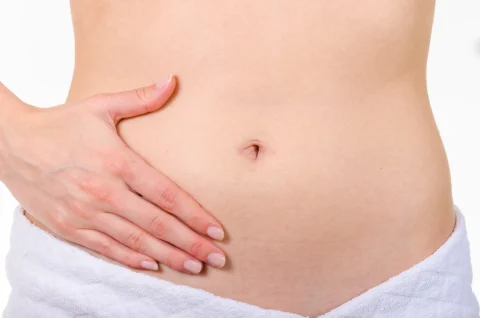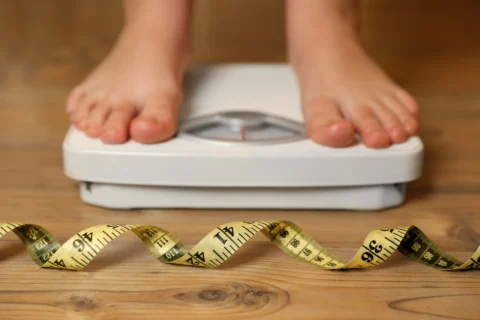Everything You Need to Know About the Process and Benefits of Getting Hormone Pellets
Hormone pellets are inserted under the skin through a small incision, typically in the hip area. The procedure is usually quick and safe, with the pellets placed under the skin, releasing a steady dose of hormones over time.
Hormone imbalances can wreak havoc on the body, causing undesirable symptoms that diminish quality of life. However, the innovative hormone pellet therapy offered at Allure Medical provides customized hormone replacement to get your body back in balance.
In this comprehensive guide, we answer all your questions about how hormone pellets can transform your health.
What is Hormone Pellet Therapy?
Hormone pellet therapy involves the insertion of small, bioidentical hormone pellets under the skin to provide sustained release of hormones over several months. The pellets contain estradiol, testosterone, progesterone, or DHEA in bioidentical form to match the body’s natural hormones. This therapy replenishes declining hormones due to aging and restores optimal levels to alleviate troublesome symptoms.
Unlike oral hormone replacement or creams that require daily dosing, pellet therapy offers effortless, around-the-clock hormone delivery with just a quick and minimally invasive insertion procedure every few months.
Experience the transformative power of hormone pellet therapy at Allure Medical and regain control of your health and vitality today
How Are Hormone Pellets Inserted?
The insertion of hormone pellets is a relatively simple and minimally invasive:
- The skin on the insertion site is cleaned and sterilized.
- A local anesthetic is injected to numb the area.
- A small incision is made in the skin, and a trocar (a sharp, hollow instrument) is used to create a small pocket under the skin.
- The hormone pellets, which are small (about the size of a grain of rice), are then inserted into this pocket.
- After the pellets are inserted, the incision is closed with a waterproof dressing and compression is applied for a few minutes.
Patients are typically sent home with instructions to apply ice to the area to reduce any discomfort or swelling.
Where Are Hormone Pellets Inserted?
Hormone pellets are typically inserted in the following areas:
| Upper outer buttock | The upper outer buttock is a large muscle area which allows the pellets to be deeply inserted. The fatty tissue helps anchor the pellets in place. The site can be easily numbed before insertion. |
| Near the hip | The bony area near the hip provides a stable base for insertion. The site is also easily accessible. |
| Lower abdomen | The fatty tissue in the lower abdomen helps anchor the pellets after insertion. The discreet location in the lower abdomen is also cosmetically appealing to some women. |
The Complete Hormone Pellet Placement Procedure
The hormone pellet placement procedure is a minor office-based method used to provide sustained hormone therapy. It involves the following steps:
- The area of the body where the pellet will be inserted, usually the hip or upper outer buttock, is thoroughly cleaned and sterilized using an antiseptic solution like betadine. This prevents infection.
- The doctor makes a small incision, around 5 mm long, in the skin using a scalpel. This allows for insertion of the pellet.
- A specialized blunt trocar instrument is used to create a tiny pocket in the subcutaneous fat layer, just deep enough to insert the hormone pellet. The trocar allows the pocket to be created without damaging surrounding tissues.
- The hormone pellets are inserted through the trocar into the subcutaneous pocket. The number inserted depends on the prescribed dosage.
- Once the pellets are in place, the trocar is withdrawn and the incision is closed using surgical tape or Steri-strips to hold the skin edges together.
- A sterile dressing is placed over the incision site and a waterproof dressing may be applied to keep the area clean and dry.
The dissolvable pellets release hormones steadily over several months. The procedure needs to be periodically repeated as the pellets dissolve.
Will You Spot Any Incisions From Hormone Pellet Insertion?
After undergoing hormone pellet insertion, it is common to spot incisions at the insertion site. These incisions are typically small, about 1⁄4″ long, and are usually made in a fatty region near the hip.
While some minor discomfort, swelling, bruising, or redness may be expected at the incision site post-implantation, stitches are usually unnecessary, and the incision is closed with Steri-Strips.
What Conditions or Symptoms Are Hormone Pellets Used to Treat?
Hormone pellets are used to treat the following conditions and symptoms:
- Menopause symptoms, such as hot flashes, night sweats, vaginal dryness, painful sexual intercourse, mood swings, depression, irritability, and insomnia
- Osteoporosis
- Depression
- Hyperthyroidism
- Hypothyroidism
- Low sex drive
- Improving energy and mood
- Reducing body fat
Find relief from menopause symptoms, osteoporosis, depression, and more with personalized hormone pellet therapy at Allure Medical
What Types of Hormones Can Be Administered Via Pellet Therapy?
Pellet therapy allows for the direct delivery of bioidentical hormones into the bloodstream. The main hormones that can be effectively administered through pellets include
| Estrogen | Specifically, estradiol is a common hormone used in bioidentical hormone pellet therapy. |
| Testosterone | Testosterone is a necessary hormone for both men and women that can be delivered via bioidentical hormone pellet therapy. |
| Progesterone | While not explicitly stated, the documents mention that bioidentical hormones can include estrogen, progesterone, and testosterone, suggesting progesterone may also be administered via pellet therapy. |
| DHEA (Dehydroepiandrosterone) | Some sources mention that bioidentical compounded hormones used in pellet therapy may include DHEA. |
How Long Do Hormone Pellets Typically Last in the Body?
Hormone pellets typically last 3-4 months in women and up to 6 months in men. The duration of the pellets can vary depending on factors such as individual metabolism, weight, activity level, and the amount of hormone deficiency or surplus.
Most patients feel the effects of the pellet therapy within 4 weeks of insertion, and the pellets are typically reinserted every 3-6 months. The hormones from the pellets are released gradually and completely over the time period that the pellet lasts.
Potential Benefits of Hormone Pellet Therapy Compared to Other Hormone Replacement Methods
Some potential benefits of hormone pellet therapy compared to other hormone replacement methods include:
Consistent Dosing
Hormone pellets are designed to provide a steady and predictable dose of hormones over several months, which can help prevent the ups and downs that can happen with other methods, leading to more consistent relief from symptoms.
Ease of Use
Pellet therapy does not require the user to remember to take medication on a daily or weekly basis, as the pellets are implanted under the skin and release hormones gradually over time. This can be more convenient for some patients.
Customization
Pellet therapy allows for customization, as there are many different strengths of hormones available to better match an individual’s needs.
Long-Lasting Relief
Depending on the individual, hormone pellets can provide long-lasting relief, potentially for several months, without the need for frequent dosing.
Improved Bone Health
In addition to treating menopausal symptoms, hormone replacement therapy with pellets may improve bone health among women after menopause, especially those with osteopenia.
Unlock the advantages of hormone pellet therapy at Allure Medical, offering consistent dosing, ease of use, customization, and long-lasting relief for a healthier, happier you
How is the Dosage of Hormone Pellets Determined for an Individual?
The dosage of hormone replacement pellets is typically determined based on the individual patient’s specific hormone levels and needs.
Some key points on how the dosage is determined:
- Clinicians will first test the patient’s hormone levels to establish a baseline. This helps determine the appropriate starting dose.
- The dosage guideline for testosterone pellet replacement therapy in androgen-deficient males is typically 150 mg to 450 mg subcutaneously every 3 to 6 months.
- For estrogen pellets, the typical dosage is around 1.5 mg of estradiol or 1.66 mg of estrone per pellet.
- The exact dosage is tailored to each patient based on their individual hormone levels and response to the therapy. Faster metabolizers may require higher doses or more frequent pellet insertions.
- Dosage calculators are used by clinicians to estimate the proper dosage for each patient based on their specific needs.
Specific Medical Conditions or Factors That Might Make Someone Ineligible for Hormone Pellet Therapy
There are a few medical conditions or factors that may make someone ineligible for hormone pellet therapy:
| Unexplained vaginal bleeding | This symptom could indicate an underlying gynecological condition that needs to be evaluated before starting hormone therapy, as introducing extra hormones could complicate or worsen the condition. |
| Liver disease | Estrogen is metabolized by the liver, so impaired liver function could lead to an accumulation of estrogen and an increased risk of adverse effects from the hormone therapy. Pellet therapy bypasses first-pass metabolism, but liver disease is still a contraindication. |
| Prior estrogen-sensitive cancer | Hormone therapy could stimulate the growth of estrogen-sensitive cancers like breast cancer. Even though pellet therapy delivers lower doses of estrogen than other methods, there is still a potential cancer risk that makes those with a history of these cancers ineligible. |
| Unpredictable and fluctuating serum hormone levels | The sustained-release pellets are intended to provide stable hormone levels, but some studies have found significant fluctuations. Irregular spikes and drops in hormones could lead to symptoms and increase long-term health risks, so inconsistent release from the pellets may be a contraindication. |
Revitalize Your Body with Customized Hormone Pellet Therapy
If you’re struggling with the effects of hormone imbalance, the innovative hormone pellet therapy at Allure Medical could be the solution. This long-lasting treatment replenishes your body’s depleted hormones to alleviate troublesome menopause, andropause, or other symptoms.
With customized hormone dosing and minimal fuss, you can get your body back in balance.
Schedule a consultation with Allure Medical today to see if hormone pellet therapy is right for you.
Our experienced providers will take the time to understand your hormone needs, create a customized treatment plan, and help you decide if hormone pellets are your best option.
Whether you choose pellet therapy or other services we offer, Allure Medical offers cutting-edge treatments to help you look and feel your absolute best. Contact Allure Medical now to start your revitalization journey.










